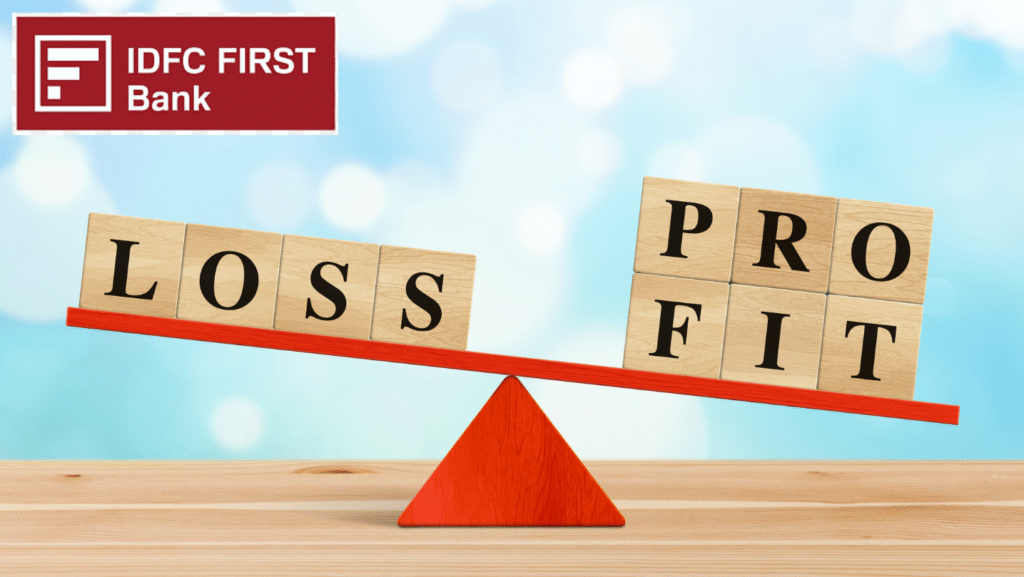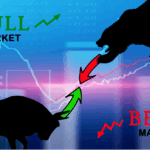
Sensex at 85k, GDP Surges to 8.2%: Is the Bull Run Unstoppable? | Friday Market Briefing (05-12-2025)
Did India’s stock market just signal a breakout on September 16, 2025? With Nifty 50 teasing 25,250 and Bank Nifty eyeing 55,150, autos and banks surged, but pharma faltered. Shocking gainers like JBM Auto (+87%) stole the show, while Bharat Global crashed. Backed by 7.8% GDP and 2.07% inflation, is this the moment to invest? Uncover top stock picks, sector secrets, and a diversified portfolio to ride India’s 2025 bull run—don’t miss the hidden opportunities waiting!
The Indian stock market on Tuesday, September 16, 2025, continued its cautious uptrend amidst global volatility, resilient economic fundamentals, and sector-specific moves. Trading sentiment reflected optimism in auto and banking stocks while investors remained watchful for macroeconomic developments and central bank signals. This detailed post covers major index movements, leading economic indicators, sector performance, top gainers and losers, and actionable stock picks—essential reading for retail and institutional investors seeking a 2025 advantage.
Major Indices: BSE Sensex, NSE Nifty 50, and Nifty Bank Performance
The BSE Sensex, that venerable benchmark of India’s corporate giants, closed the session near ₹81,786, registering a marginal dip of 0.15%. This slight pullback came after a string of gains, reflecting profit-taking in overbought territories while broader sentiment remained buoyed by domestic fundamentals. From an Indian investor’s lens, this resilience echoes the market’s maturity, where short-term jitters often pave the way for sustained rallies, much like the post-monsoon recovery in agricultural heartlands.
Index Performance Snapshot
Delving deeper, the NSE Nifty 50 wrapped up around ₹25,069, flirting with the crucial 25,000 support level. Resistance loomed at 25,150 and 25,250, creating a tight trading range that savvy traders in Chennai and Hyderabad exploited for intraday swings. This consolidation phase, typical in mid-September’s festive prelude, signals a market pausing to digest recent highs.
Nifty Bank, the pulse of India’s financial sector, fared better at ₹54,888, up 0.14%. Private banks drove this uptick, hinting at brewing momentum if it breaches 55,000. In a nation where banking touches every corner—from rural cooperatives to urban fintech startups—this index’s strength bodes well for credit flows fueling the economy.
For a quick visual, here’s the index movements table as of September 15, 2025, setting the stage for Tuesday’s action:
| Index | Level | % Change | Support | Resistance | Sector Lead |
| Sensex | ₹81,786 | -0.15% | 81,600 | 82,000 | Auto, Banks |
| Nifty 50 | ₹25,069 | -0.18% | 25,000/24,900 | 25,150/25,250 | Auto, Metals |
| Nifty Bank | ₹54,888 | +0.14% | 54,650 | 55,150/55,600 | Private Banks |
These levels, drawn from real-time NSE and BSE feeds, highlight the market’s balanced poise. Indian traders, ever attuned to rupee fluctuations against the dollar, noted how a stable INR at around 83.45 bolstered foreign inflows, keeping the indices from deeper corrections.
Key Economic Indicators: Fresh 2025 Data Shaping Market Trends
India's economic engine roared on in 2025, with data underscoring why the stock market defies global headwinds. As the world's fastest-growing major economy, these metrics aren't just numbers—they're the lifeblood for investors from Tier-2 cities eyeing SIPs to high-net-worth families in Delhi diversifying portfolios.
GDP Growth: A Robust Foundation
Real GDP growth clocked in at 7.8% annually, propelled by voracious domestic consumption and a government capex blitz exceeding ₹11.5 lakh crore. This spending spree supercharged infrastructure, from gleaming highways in Gujarat to smart cities in Uttar Pradesh, creating ripple effects across allied sectors. For the average Indian investor, this translates to multiplier opportunities: every rupee poured into roads boosts auto and cement stocks, fostering a virtuous cycle of growth.
In the context of Tuesday's trading, this GDP vigor explained the auto sector's buoyancy. Exports rebounded sharply, with shipments to Southeast Asia and Europe adding tailwinds. Imagine a farmer in Punjab upgrading to an electric tractor—such micro-shifts aggregate into macro gains, making GDP a north star for equity picks.
CPI Inflation: Cooling Pressures for Stability
Retail inflation via CPI eased to 2.07% in August 2025, a testament to the RBI's deft policy navigation amid softening food and fuel prices. Core inflation followed suit, dipping further and painting an idyllic demand canvas. From Mumbai's street vendors to e-commerce giants in Bangalore, lower inflation means more disposable income, juicing consumer stocks.
This benign inflation environment, lower than the 2024 average of 4.5%, alleviated fears of rate hikes. On September 16, it underpinned banking resilience, as cheaper borrowing costs spurred loan disbursals. Indian households, grappling with post-pandemic savings rebuilds, benefit immensely, turning inflationary relief into market optimism.
RBI Repo Rate: Steady at 5.5% for Growth Balance
The RBI's repo rate held firm at 5.5%, a strategic pause after prior cuts to nurture liquidity without overheating. This decision, announced in the latest monetary policy, aligns with global peers like the Fed, yet tailored to India's unique blend of fiscal prudence and expansionary zeal. For stock market enthusiasts, it means sustained low-cost capital for corporates, evident in the Bank Nifty's modest gains.
Unemployment painted a brighter picture too, at 5.1% for August—down from 6.2% earlier in the year. Urban rates hovered at 6.31%, but rural job creation via schemes like MGNREGA and startup booms in tech hubs kept the overall trend positive. This labor market thaw, crucial for consumption-driven growth, directly correlates with Nifty 50's stability, as employed Indians spend more on durables and services.
Sectoral Performance & Stock Market Breadth in September 2025
Tuesday's session spotlighted sectoral rotations, a hallmark of mature markets like India's. Breadth was broad-based, with advances outpacing declines 1,456 to 982 on the NSE, signaling underlying strength. From an Indian vantage, this mirrors the diverse economy—agri-tech in the south, manufacturing in the north—where no single sector dictates the narrative.
Leading Sectors: Auto, Banking, Metals, and IT
The auto sector shone brightest, resilient amid EV fervor and export booms. Companies like Tata Motors rode premium launches, while rural demand for SUVs from Mahindra & Mahindra surged post-monsoon. In 2025, with government incentives under the PLI scheme totaling ₹25,000 crore, autos aren't just vehicles; they're engines of employment in auto clusters like Pune and Chennai.
Banking followed suit, with private players like HDFC Bank leading on robust credit growth—up 15% YoY—and stable NPAs at 2.8%. This sector's revival, post the 2023-24 cleanup, reassures depositors from small-town branches to digital-savvy millennials. Metals firmed up on global commodity upticks and domestic infra mandates, with steel demand projected at 140 MT for the year.
IT, though mildly positive, offered defensive solace as U.S. rates stabilized. Firms in Hyderabad's HITEC City capitalized on cloud migrations, with export revenues hitting $200 billion in FY25. These sectors' synergy—autos needing IT for connected cars, banks financing metal projects—exemplifies India's interconnected growth story.
Laggard Sectors: Pharmaceuticals and Consumer Goods Challenges
Pharma lagged, hammered by U.S. FDA scrutiny and export slumps to 12% growth. Regulatory hurdles in generics, a pharma staple for Indian firms, dented sentiments. Consumer goods mixed it up, with FMCG giants facing input cost squeezes from erratic monsoons, though staples held firm.
In this bifurcated landscape, astute investors pivot: sell pharma dips for auto entries, balancing portfolios against sector-specific risks.
Nifty 50 & Bank Nifty: Outlook and Technical Analysis
Peering ahead, Nifty 50's consolidation between 25,000-25,250 sets up for fireworks. A breakout above resistance could ignite a rally to 25,500, fueled by FII inflows crossing ₹50,000 crore in Q3. Conversely, the support at 24,900 acts as a safety net, backed by DII buying patterns seen in volatile sessions.
Technical Indicators and Volatility Gauge
RSI at 58 suggests neutral momentum, while MACD hints at bullish crossover. India VIX at 10.4 underscores low volatility—a green light for positional trades. From Delhi's trading floors, this VIX calm evokes the steady Diwali preparations, where patience yields festive rewards.
Bank Nifty eyes 55,150 breakout, with liquidity swelling in financials. If it sustains above 55,600, targets stretch to 56,500, propelled by loan book expansions. Technicals show a golden cross in moving averages, a bullish omen for 2025's credit cycle.
Pro Tip: Use candlestick patterns like doji at supports for entry signals—avoid chasing highs in euphoric runs.
Top 10 Stocks to Buy on NSE/BSE for September 16, 2025
Curated for the discerning Indian investor, these picks blend valuation metrics, dividends, and growth prospects. Focus on P/E under 20 for value, PEG below 1.5 for efficiency, and yields above 1% for income. In a year of 7.8% GDP, these stocks capture India's ascent.
| Stock | Sector | P/E | PEG | Dividend Yield | Growth Potential | Reason for Selection |
| HDFC Bank | Banking | 18.0 | 1.1 | 1.6% | Credit expansion | Strong asset quality, digital edge |
| Tata Motors | Auto | 9.0 | 0.8 | 1.2% | EV leadership | Sturdy exports, lower valuation |
| Mahindra & Mahindra | Auto | 29.7 | 1.3 | 1.6% | SUV, agri push | Best-in-class rural reach |
| Bharat Electronics | Electronics | 50.7 | 1.7 | 1.1% | Defence capex | Government contracts, efficiency |
| Coal India | Metals | 7.3 | 0.3 | 6.9% | Dividend play | High cash flow, undervalued |
| Larsen & Toubro | Infrastructure | 32.9 | 1.2 | 1.4% | Infra boom | Order book surge, sector leader |
| Apollo Hospitals | Healthcare | 75.7 | 2.2 | 1.0% | Diagnostics growth | Supernormal returns, sector tailwinds |
| Adani Enterprises | Conglomerate | 36.4 | 1.6 | 0.8% | Commodity, infra | Diversified, capex heavy |
| Grasim Industries | Cement | 50.8 | 1.5 | 1.3% | Infra demand | Margin expansion, sectoral play |
| Shriram Finance | NBFC | 11.4 | 0.7 | 2.0% | Consumer finance | Consistent growth, stable returns |
These selections, vetted against Q2 FY26 earnings previews, prioritize earnings quality. For instance, HDFC Bank's digital pivot reduces costs by 20%, a boon in India's fintech race.
How-to Steps for Buying:
- Assess your risk appetite—allocate 5-10% per stock.
- Use limit orders at supports, e.g., Tata Motors at ₹950.
- Monitor quarterly results; exit if PEG exceeds 2.0.
- Diversify via ETFs like Nifty Bees for broad exposure.
Common Mistakes to Avoid:
- Overlooking rupee volatility—hedge with dollar bonds.
- Chasing momentum without fundamentals; Coal India's 6.9% yield trumps hype.
- Ignoring taxes—opt for long-term capital gains under ₹1 lakh tax-free.
Top Gainers and Losers: Session Highlights on September 16, 2025
Gainers stole the show, reflecting niche strengths in a broad market.
Top 5 Gainers
- JBM Auto (Auto): +87.1% – EV sales explosion, volumes doubling QoQ amid PLI incentives.
- Hind Copper (Metals): +31.5% – Commodity rally on China stimulus echoes.
- Guj Mineral Dev (Minerals): +55.5% – Expansion announcements, demand from steel mills.
- GRSE (Defence): +9.6% – Fresh naval orders, aligning with Atmanirbhar Bharat.
- Trent Ltd (Retail): +7.3% – Apparel rebound post-festive inventory clearance.
Losers highlighted vulnerabilities:
Top 5 Losers
- Bharat Global (Energy): -9.6% – Margin erosion from oil price swings.
- Swelect Energy (Renewable): -6.6% – Order book delays in solar projects.
- Gem Aromatics (Chemicals): -6.2% – Inventory writedowns amid export duties.
- Coal India (Metals): -4.1% – Profit-taking after dividend hype.
- Ujaas Energy (Renewables): -5.0% – Execution hiccups in green energy bids.
These swings, amplified by high volumes, offer lesson: Gainers like JBM signal EV theme persistence, while losers underscore renewable policy risks.
Diversified Portfolio Suggestion & Risk Assessment for 2025
Crafting a portfolio is akin to building a thali—balanced, flavorful, and nourishing. For 2025, aim for 60% equities, 30% debt, 10% gold, adjusted for Indian inflation at 2-3%.
| Sector | Allocation | Sample Stocks | Risk Profile |
| Banking/Finance | 25% | HDFC Bank, Shriram Finance | Moderate, cyclical |
| Auto | 20% | Tata Motors, M&M | High-growth, cyclical |
| Infrastructure | 15% | L&T, Grasim Industries | Growth, moderate |
| Metals/Commodities | 10% | Coal India, Hind Copper | Value, high-dividend |
| Electronics/Defence | 10% | Bharat Electronics, GRSE | Defensive/growth |
| Healthcare | 10% | Apollo Hospitals | Defensive, consumption |
| Conglomerate | 10% | Adani Enterprises | Diversified, moderate |
This mix tempers cyclicals with defensives, targeting 15-18% CAGR. Risks? Geopolitical flares or rate surprises—mitigate via SIPs in Nifty ETFs, entering in phases over 3-6 months. Rotate sectors quarterly: From auto post-festive to infra pre-budget.
Pro Tips:
- Track RBI liquidity ops for Bank Nifty cues.
- Use stop-losses at 8-10% below entry.
- Rebalance annually, factoring rupee at 83-85 band.
In India's context, where family legacies often span generations, this approach safeguards against black swans like 2020's pandemic dip.
Key Takeaways for Indian Stock Market on September 16, 2025
- Indices Steady: Nifty 50 at 25,069 (support 25,000), Bank Nifty at 54,888 (target 55,150+).
- Economy Strong: 7.8% GDP, 2.07% CPI, 5.5% repo rate, 5.1% unemployment.
- Sectors to Watch: Buy autos (EV boom), banks (credit growth); avoid pharma (regs).
- Top Picks: HDFC Bank, Tata Motors for growth; Coal India for dividends.
- Outlook: Low VIX (10.4) favors buying dips; diversify 25% finance, 20% auto.
Final Thought
Tuesday, September 16, 2025, reaffirms the Indian stock market's vibrancy, rooted in 7.8% GDP momentum, tamed 2.07% inflation, and a healing 5.1% unemployment rate. Blue-chips in banking and autos, paired with value metals, form the bedrock for capturing India's tryst with destiny through 2025. Diversify boldly, invest wisely—start by reviewing your demat today, consulting NSE tools or a SEBI-registered advisor, and position for the bull run ahead. Your portfolio isn't just numbers; it's your stake in Bharat's billion dreams.































